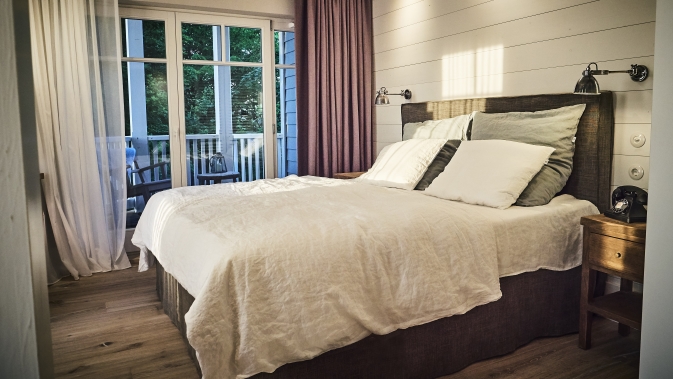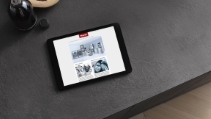Recently, you kitted out German actor Til Schweiger's Barefoot Hotel with a special type of bed linen ...
Yes, when the hotelier wants something individual, we cater to them. We have also noticed that the demands are becoming greater as everyone wants to stand out in some way. Some have themed rooms, others want linen. It was the same with Til Schweiger and his Barefoot Hotel. He wasn't interested in the norm – instead, he had very specific ideas. He wanted to create a cosy ambience and wanted to emphasise this with linen bedding. We decided on a linen type which would withstand frequent laundering. It is always about ensuring that the items are as long-lasting as possible and contribute to the hotel's very essence. In Schweiger's Barefoot Hotel, that is the relaxed atmosphere – you feel at home. When you enter a room, you won't find any creases on the pillows, even though linen creases naturally. The bed linen was customised on request. We selected a Belgian linen as this best fulfilled the requirement for durability. Belgian linen does, of course, come at a price, but we were right to make the investment. The guests and hotelier were extremely satisfied.
And what about high-quality table linen – is this still fashionable in modern gastronomy?
I have to say that, for around 3 to 4 years, we have noticed the sales figures declining for table linen. Since then, lots of fashionable restaurants have emerged, which want to win customers over primarily with trendy design concepts. The range of materials available for table tops is enormous and people no longer want to hide these under table linen. For a few years, we have noticed a trend where table linen is no longer particularly important. What's more, people don't want to have to do the ironing in-house, as it means extra work. This is why disposable table linen is often used here. However, when it comes to sophisticated gastronomy with ambitious kitchens, table linen will always be essential. It is also common in this area – quite rightly so – for restaurants to wash their linen themselves to maintain the right quality. These restaurateurs say: “My cuisine and my dishes are not the only skills which I present to the world – the way in which I set my tables is too. And for me, that includes the table linen.” We call that “textile hospitality”.


